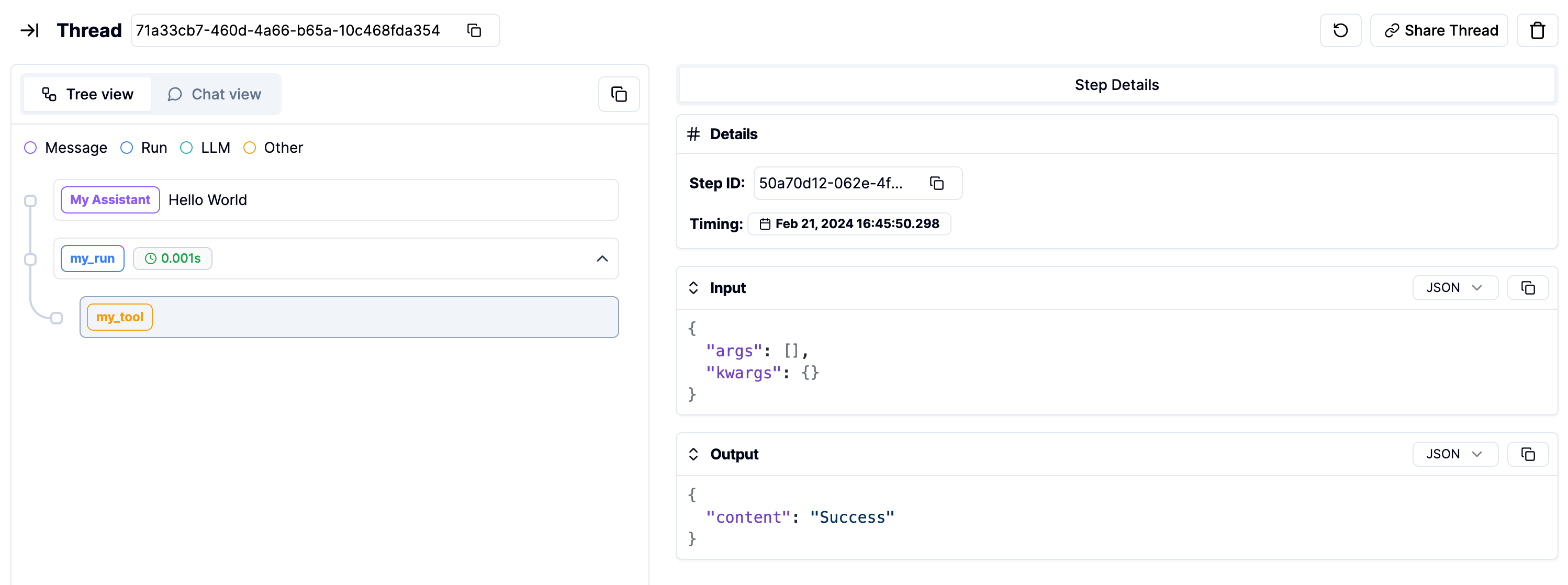Types of Steps
There are several types of Steps, each serving a distinct purpose:Run
Arun step signifies the execution of an agent or a chain that takes multiple steps. Unlike other step types, it does not have to be part of a Thread.
This is useful if you are monitoring non conversational use cases.
Message
Amessage step represents a message exchange within a Thread. There are two primary subtypes of message steps:
- User Message: This type of step is used to log messages sent by the user. It helps in tracking user inputs and requests.
- Assistant Message: This step logs messages generated by the assistant or application in response to user inputs.
Tool
Atool step is used to document interactions with external tools or services. This step type is particularly useful for applications that interact with external APIs, databases, or services.
LLM
Anllm step is used to document interactions with large language models (LLMs). This step type is particularly useful for applications that leverage AI models, such as GPT-3, for generating responses, content, or performing analysis.
Implementing Steps
Visualize the Steps on Literal

Output on the platform

